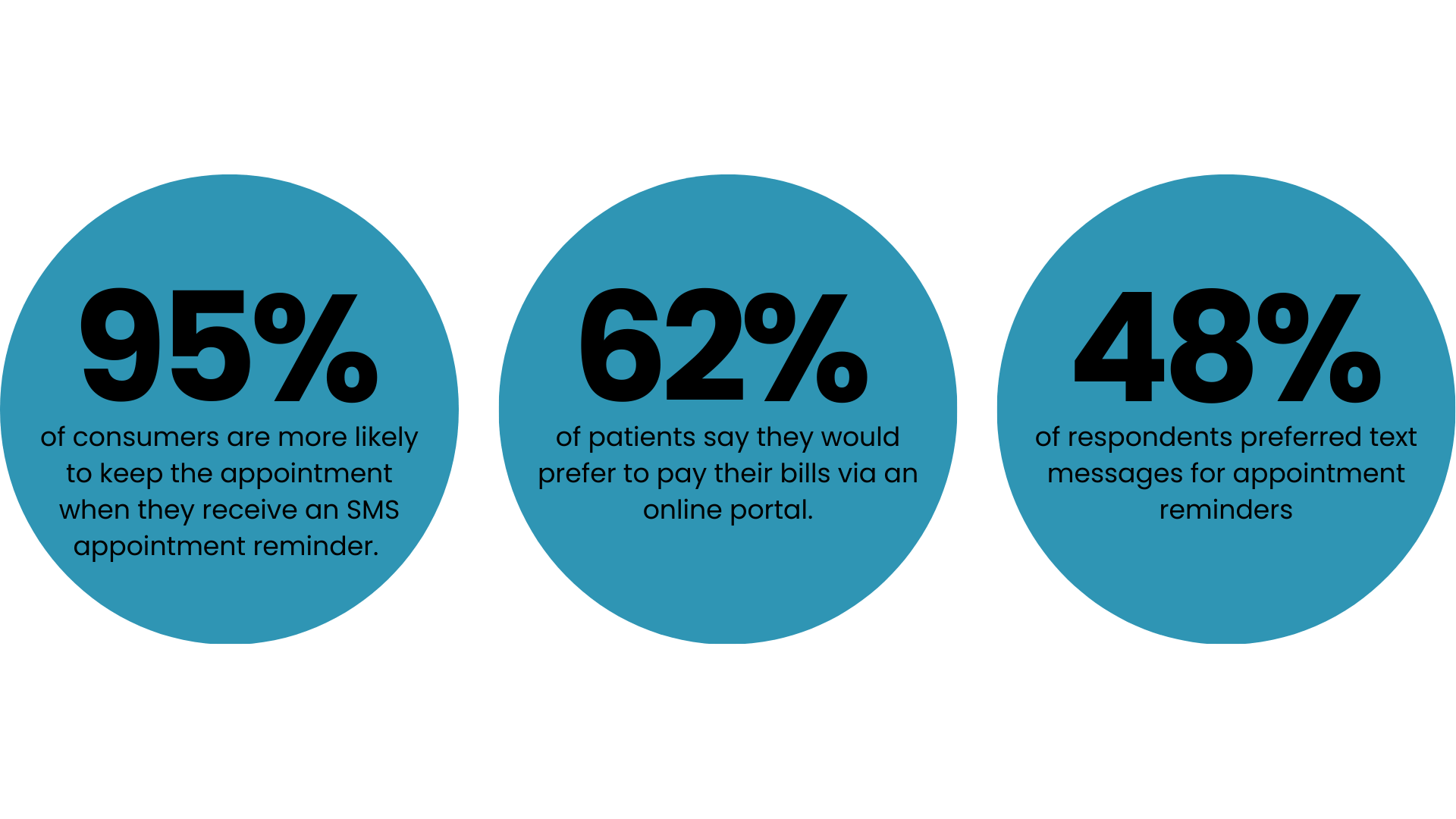Ready, Set, Automate!
Updated August 26, 2025
Originally Published November 13, 2023
Collecting information during patient registration is time-consuming, but its importance cannot be overstated. This first step lays the foundation for meaningful patient relationships and comes with a hidden bonus: enabling automation.
Automation is the cornerstone of healthcare’s future for providers of all sizes and specialties. It’s now affordable for even small offices, benefiting not just practices and billing companies, but the patients too. In fact, the entire healthcare system gains from automation.
Let’s take a closer look.
Fewer errors
Automation eliminates common errors from manual processes, such as illegible handwriting, lost paperwork, or miscommunication. Data validation and verification keep information consistent and accurate, while scanning insurance cards, driver’s licenses, and identification cards speeds up data entry and greatly reduces errors.
More time and resources
By automating routine tasks such as appointment scheduling, sending reminders, billing, and reporting, you free up valuable time and human resources. This gives your staff more time to dedicate to patient care and other responsibilities. By reducing the workload and stress on your staff, automation improves service quality and job satisfaction.
Comprehensive service
Automation takes a lot of the logistical hassle out of patients’ lives by streamlining services. Patients get easy access to an overview of their visits and payments. And they can pay their bills or schedule appointments online with just a few clicks. Alerts and reminders arrive on the patient’s phone instantly, with minimal staff effort.
Patients like automation, too
Research shows that patients expect to get a text or email reminder about their appointment, and 59% even prefer it over a phone call. When consumers receive an SMS appointment reminder, they are 95% more likely to keep the appointment. Even 34% of patients 65 and older also prefer text message appointment reminders, despite the assumption that older patients are resistant to new technology. Overall, 48% of respondents preferred text messages for appointment reminders.
Billing processes can have far-reaching impact
Automated balance reminders allow patients to pay quickly online with just the click of a button. Statistics show that 90% of texts are opened immediately upon receipt, which bodes well for rapid payment. And 62% of patients said they would prefer to pay their bills via an online portal.
But there’s more to it than just fast payments. Bad billing practices could have long-term consequences. Over 36% of respondents said they would consider switching healthcare providers if they had a poor experience with billing.
It’s clear that many patients are ready to move towards increased automation and are aware that it will drastically improve their healthcare experience. But the upside isn’t just for your patients. Let’s look at how automation can impact your bottom line.
Minimum effort, maximum reimbursement
Retaining quality staff and keeping them satisfied is a top priority in any practice or billing company. The cost of turnover is way too high to risk having an unhappy worker. Medical billers, front office staff, and practice administrators can use their time more effectively if they are not bogged down with time-consuming repetitive tasks. Valued staff can then focus on patient care or complex billing issues that need human intervention, including rescuing potential lost revenue. Not only does this increase job satisfaction for workers, but it also enables better service at a lower cost.
In one study, a practice that implemented appointment reminders saw no-show rates plummet from 21% to about 7%. Let’s say, for easy math, that the average appointment brings in $200 in revenue, and a provider sees 250 appointments per month, this 14% drop in no-shows translates into a hefty $84,000 per year in additional revenue.
While this is a theoretical calculation, it represents the actual savings that could be incurred by a practice. With the right safeguards to ensure the accurate recording of patient information and HIPAA compliance, this practice is firmly on the path to sustained revenue growth.
At this point, you might be asking yourself where to begin. We recommend following these steps:
Appointment calendar
Determine how your staff spends most of their time. Tedious processes like scheduling can be simplified with automation. A solid investment in customizing calendar rules and settings can save a huge amount of time.
We recommend these key useful features :
Appointment Types. Customizable to accommodate provider scheduling preferences. Front desk staff can provide patients with this information so they know what to expect when scheduling their appointments.
Appointment Shells. Provide visibility for complicated Builds and provider availability, offering a “one and done” scheduling model that saves everyone time.
Appointment Slots. Outline specifics of how each provider wants their day formatted, including a template with an easy-to-use standard.
Scheduling Rules. Based on Slot Type, Appointment Type, and days of the week. These rules eliminate the guesswork of determining appointment availability for both the scheduler and the patient. They also include recurrence limitations.
Appointment reminders
These immediately improve efficiency and drastically reduce appointment no-shows. Appointment reminders utilize mappable fields to provide customizable messages to patients, offering a friendly and more personal alternative to manual recall lists. Appointment reminders also ensure compliance with insurance companies by communicating patient care plan needs accurately and effectively.
Balance notifications
Automatic balance notifications are an economical way to immediately reduce staff effort and increase your collection percentage. Patients appreciate transparent billing practices that eliminate any surprise expenses and give them the confidence that they are being fairly billed.
Conclusion
Incorporating patient information collection and automation into your medical practice or billing company is a win-win for both healthcare providers and patients. It improves efficiency, enhances patient care, and ultimately leads to better healthcare outcomes. If you’re reluctant to automate too much, start small with appointment reminders and balance notifications. You’ll get more comfortable and be ready for any new technology that comes your way. Set your future up for success by learning more about automation today.




